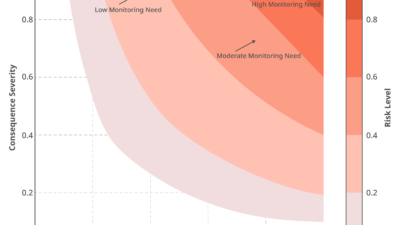Integrated manufacturing operations management (iMOM) is designed to increase and sustain business benefits for users such as improved accuracy and thorough implementation.

In integrated manufacturing operations management (iMOM), the ultimate goal of using software systems is to increase and sustain business benefits. In theory, this goal could be achieved by working with a single software vendor throughout the project lifecycle. In practice, though, single-vendor approaches are not the best approach because:
- No single vendor provides enough functionality coverage of the integrated iMOM functions.
- The manufacturing site and its parent company evolve over time – the site adds processing and procedures, the parent company acquires diverse manufacturing sites which use different software, and these activities often bring diverse iMOM vendors together.
- Before standards such as ISA-95, iMOM activities were poorly defined, projects took up to 6 times longer, and the average success rate was less than 50%.
- Integration of iMOM systems with other systems, such as enterprise resource planning (ERP), logistics systems, and automation/Internet of Things (IoT) can suffer the same failure rates as the core iMOM system implementation.
- It is impractical for most end users to develop and evolve their own requirements “language” to work with a single vendor or multiple vendors.
Another key challenge in applying software for iMOM activities is ensuring the design and its implementation are actually improving the business processes and increase operational and business performance. This challenge spawned the definition of standards on software architecture design, which is synergistic to the standards on iMOM activities and information exchanges.
12 benefits of applying iMOM standards
- High success rates in terms of project completion as well as long-term adoption
- Manual tasks can be minimized, procedures can be standardized, reactive procedures can be changed into proactive, training can be accelerated
- The use of standards enables a thorough definition, verification and analysis of functional and technical requirements and produces a consistent set of business processes
- iMOM systems can be reliably modified to incorporate new technologies and cover more iMOM activities
- Management can prioritize and implement multiple iMOM activities across multiple manufacturing areas and sites
- Accurate and complete interface design, data transformations and data exchanges among the various iMOM components
- Efficient integration with the systems in the layers above and below the iMOM system, i.e. the ERP and the plant monitoring and control systems
- More efficient to work with multiple vendors and to combine different software into one iMOM solution
- Easier to adopt emerging technologies and standards
- Easier to share pools of experts across multiple facilities, including service contractors
- Easier to benchmark multiple sites or to manage and operate multiple sites from a central facility
- Easier to reuse and/or expand design and implementation work across other iMOM activities and other iMOM projects.
Adopting standards helps the project and support teams to ensure a complete design coverage and to have an effective “language” for design, requirements definition and testing. Complex projects can reliably assign work to multiple specialized teams. The standards also simplify the writing of the requirements for the end users, simplify the vendor’s understanding of the end user requirements, and assist both parties in ensuring that the requirements and the overall implementation are complete and correct.
Stan DeVries, senior director, digital acceleration consulting, AVEVA Software. This article originally appeared on MESA International’s blog. MESA International is a CFE Media content partner. Edited by Chris Vavra, production editor, Control Engineering, CFE Media, [email protected].



